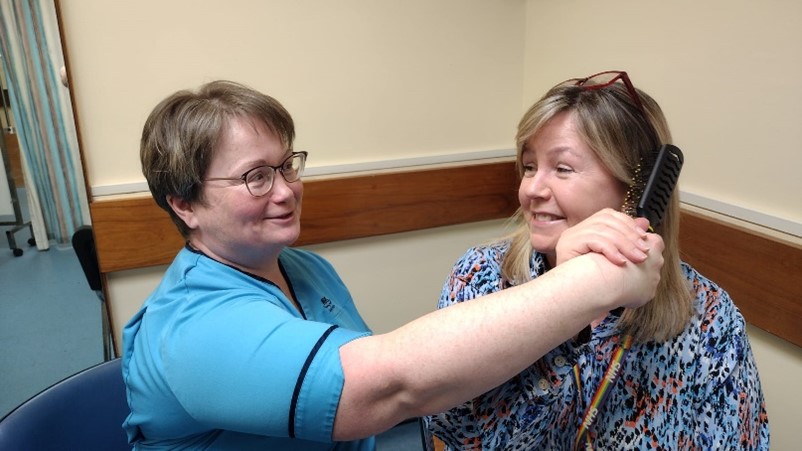[ad_1]
A More Inclusive Way to Physically Support People Living with Dementia
As physiotherapists, we are often asked about the best ways to help people move when they start to have difficulty moving for themselves. When movement becomes a problem, it can prevent people doing everyday activities independently like getting washed and dressed, eating, drinking, or getting up out of a chair to walk.
It can be distressing for the person living with dementia to have another person helping them with these things, as they may feel like they don’t have control over the way these things are done, or may have limited understanding of what a caregiver is trying to do for them.
One of the ways in which we can manage this, is by using a technique known as ‘Hand Under Hand’ technique. This was a technique originally described by Teepa Snow, and has been adapted for teaching by the University of the West of Scotland as part of their Dementia Specialist Improvement Leader course. It allows the person more control over their care when they are no longer able to do certain things independently.
The steps are described here, with thanks to Catherine McKerrow for being a willing model and Claire Craig for being a willing photographer!
Step 1: Start with some space and a smile!

When introducing yourself to the person living with dementia, or approaching to complete a new care task, give the person space. Stand around 6 feet away from them (or about 2 arms lengths)
Step 2: Raise your open hand to eye level

Sometimes the person with dementia won’t see you immediately when you enter their space. Raising your open hand to eye level prompts them to look up and at your face. Making eye contact is important for reassurance and connection.
Step 3: Prompt an invitation into their space

Extend your hand in invitation of a handshake. Generally, this will prompt the person to lift their hand up to reach for you, inviting you into their space. When they do invite you in, step forward slowly to take their hand.
If the person does not respond by outstretching their hand, you can ask for their permission to step forward and take their hand. If they appear uncomfortable with your presence, or distressed in any way, disengage and return when they have settled down again (this may take only a few moments). Most of the tasks you want to achieve with the person can be delayed a short while until the person is more receptive- this allows them to feel more in control of their routine.
Step 4: Initial Physical Contact

A firm handshake allows the person to feel comforted and reassured- palm to palm contact stimulates the nerves which feedback to the brain that the person is safe and cared for.
Step 5: Move into Hand Under Hand Position



Keeping your hand in theirs, step round to the person’s side, rotating your hand at the same time into the position shown in the photos. Your thumb should be held between the person’s thumb and fingers to allow firm palm to palm supportive contact. Keeping this contact, you can now position yourself appropriately for the care task which needs to be done- sit beside them if you are going to help them eat or drink or help them to stand by placing your free hand on their back and ‘cueing’ the movement with your hand in their hand by lifting their arm gently upwards.
Step 6: Assist the person with a care task



[ad_2]
Source_link

